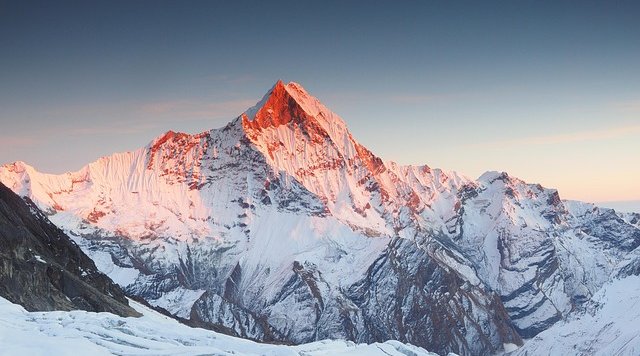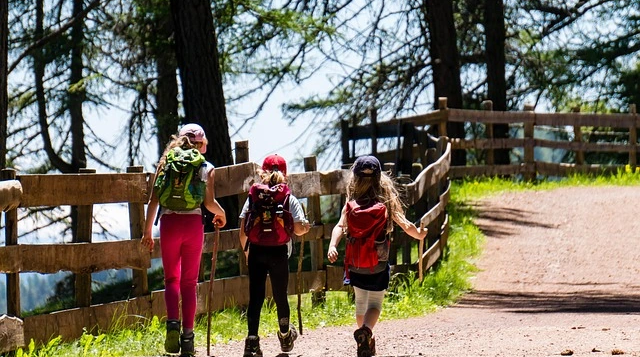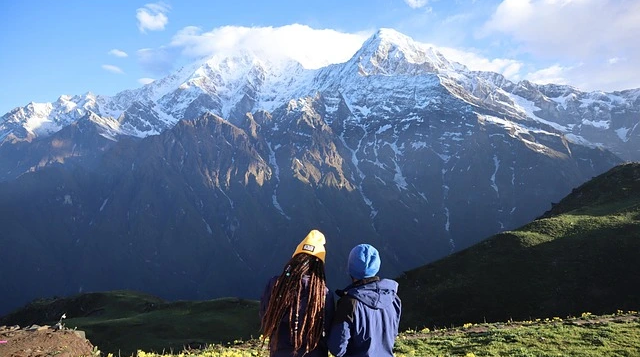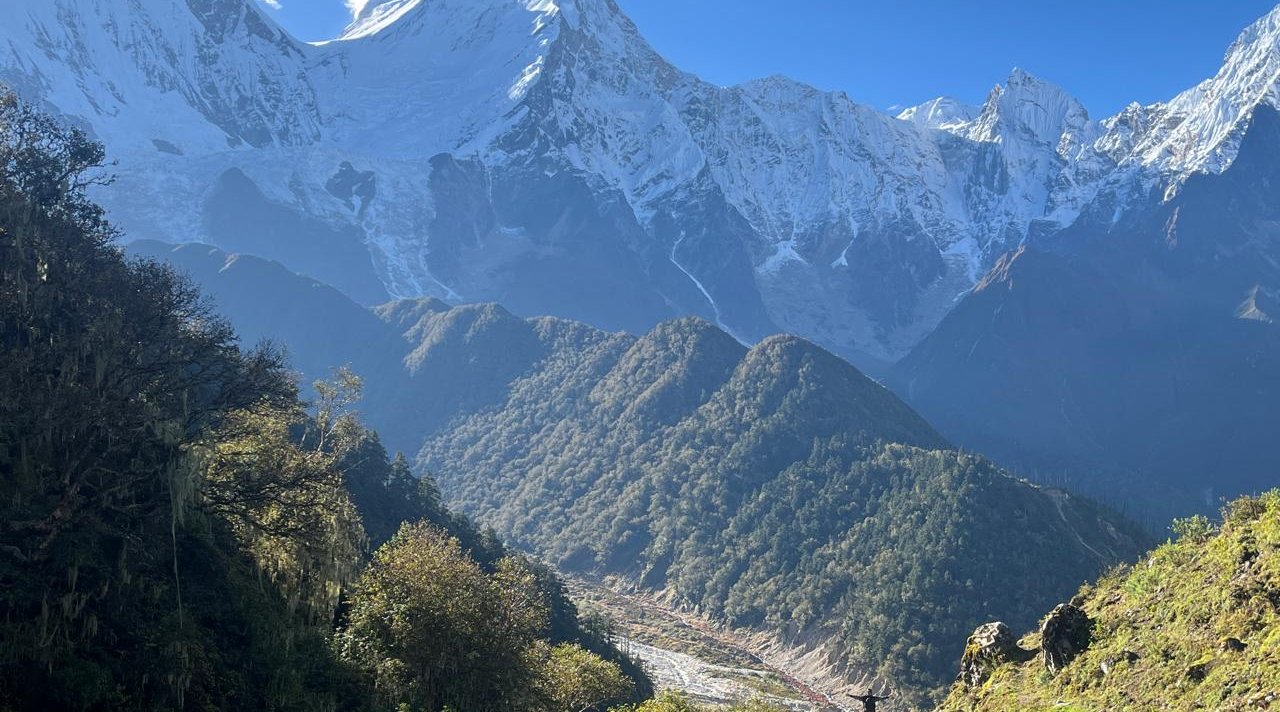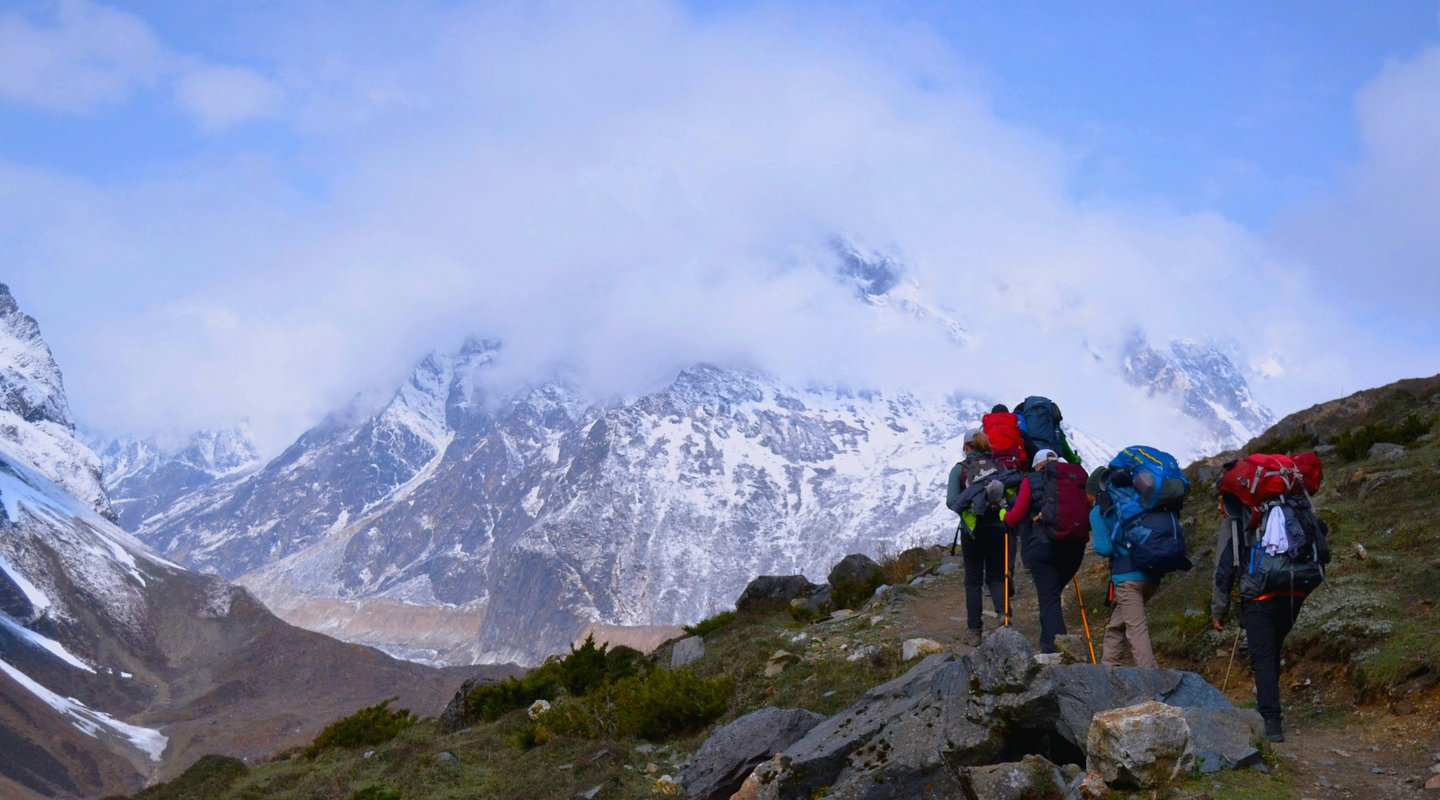Planning your first Everest Base Camp trek and wondering whether to take the classic Lukla flight or the adventurous road route? This comprehensive guide breaks down everything beginners need to know about the Everest trek road vs flight options, helping you make the best choice for your adventure, budget, and comfort level.
Quick Comparison Overview
When comparing the road trip to Everest Base Camp versus the traditional flight route, several key differences emerge:
Duration: The Everest Base Camp trek by road takes 15-22 days total, while the flight route requires only 12-14 days. This extra time on the road route provides better acclimatization and cultural experiences.
Cost: The cheapest way to Everest Base Camp is definitely by road, costing USD 700-1,900 compared to USD 1,200-3,000 for the flight route. This makes the Everest Base Camp trek cost by road significantly more budget-friendly.
Starting Altitude: The road route begins at 1,400m in Kathmandu, allowing gradual altitude gain. The Lukla flight deposits you immediately at 2,860m, creating a sudden altitude jump that can challenge beginners.
Weather Dependency: Lukla flight delays are notorious, with cancellations being common during the monsoon and winter seasons. The road route offers weather independence, though Nepal road landslides can occasionally cause delays.
Acclimatization: The comparison between the Everest Base Camp acclimatization road and flight route favors the road route, as its gradual altitude progression reduces the risk of altitude sickness by up to 40%.
Road Route Advantages
The Everest Base Camp trek without flight offers several compelling benefits that many beginners overlook. Let's explore why the Everest Base Camp overland route might be your best choice.
Gradual Acclimatization (Starting at 1,400m vs 2,860m)
The most significant advantage of the EBC trek by road from Kathmandu is the gradual altitude gain. Starting your journey at 1,400m and slowly ascending through the foothills provides natural acclimatization that the Lukla flight vs road to EBC comparison clearly favors.
When you choose Kathmandu to Lukla by road, your body has 3-4 extra days to adjust before reaching the altitude where most trekkers begin experiencing symptoms. This dramatically reduces altitude sickness prevention EBC concerns. The road route follows ancient trading paths through Sherpa villages trekking route, allowing your red blood cells to multiply naturally as you climb.
The Everest trek acclimatization road route typically includes overnight stops at:
- Jiri (1,905m) or Salleri (2,390m)
- Junbesi (2,670m)
- Nunthala (2,320m)
- Phakding (2,610m)
This progression is far gentler than the immediate jump to Tenzing Hillary Airport Lukla at 2,860m.
Cost Savings (USD 700-1,900 vs USD 1,200-3,000)
The Everest Base Camp trek cost comparison heavily favors the road route. When analyzing Everest Base Camp trek road vs flight cost, consider these breakdowns:
Road Route Costs:
- Kathmandu to Salleri drive: USD 20-30 (public bus) or USD 150-200 (private jeep)
- Extra accommodation: USD 100-150 (3-4 nights)
- Additional meals: USD 60-80
- Same permits: Sagarmatha National Park permit (NPR 3,390) and TIMS permit Everest (NPR 2,000)
Flight Route Costs:
- Lukla flight: USD 217 (foreigners) each way
- Potential delays: USD 50-100 per day in Lukla
- Lukla flight cancellation risk often requires helicopter alternatives at USD 500-600
The Everest Base Camp Jeep vs flight comparison shows significant savings, especially for budget-conscious travelers seeking the cheapest way to Everest Base Camp.
Weather Independence & Safety
Is Lukla flight safe? While statistically acceptable, the Lukla Airport runway is famously challenging. The 527-meter runway has a 12% gradient and is surrounded by mountains, making it one of the world's most dangerous airports. Lukla flight weather delays affect 30-40% of flights during peak seasons.
The Lukla flight vs jeep ride safety comparison favors road travel for nervous flyers. Though the Kathmandu to Thamdanda drive time takes 10-12 hours on winding mountain roads, you maintain control over your journey. Nepal road landslides pose occasional challenges, but alternative routes usually exist.
Weather-related advantages of road travel include:
- No flight cancellations trapping you in Lukla
- Flexibility to wait out bad weather in comfortable lower villages
- Year-round accessibility (though best season for Everest Base Camp trek by road remains spring and autumn)
- No expensive Everest Base Camp helicopter alternative needed
Cultural Immersion Through Lower Villages
The road trip to Everest Base Camp reveals authentic Nepal that flight-takers miss. The journey through the Middle Hills exposes you to:
Tamang and Rai Villages: Before reaching Sherpa territory, experience diverse ethnic communities with distinct cultures, languages, and traditions.
Agricultural Landscapes: Witness terraced fields, orange groves, and cardamom plantations impossible to see from Lukla's altitude.
Local Markets: The Kathmandu to Salleri drive time includes stops at bustling bazaars where locals trade goods, not tourist souvenirs.
Buddhist Progression: Observe how Buddhism gradually intensifies as you climb, from Hindu-influenced lower regions to pure Tibetan Buddhism near Tengboche Monastery altitude.
Traditional Hospitality: Lower villages see fewer tourists, offering more authentic interactions with curious, welcoming locals.
Flight Route Advantages
Despite the road route's benefits, the traditional Lukla flight remains popular for good reasons. Understanding these advantages helps in your Everest Base Camp trek road vs flight difficulty decision.
Time Efficiency (12-14 days vs 15-22 days)
The primary advantage of flying to Lukla is time savings. The standard Everest Base Camp trek road vs flight duration comparison shows:
Flight Route Timeline:
- Day 1: Fly Kathmandu to Lukla, trek to Phakding
- Days 2-11: Standard EBC itinerary via Namche, Tengboche, Dingboche
- Days 12-14: Return trek to Lukla and fly out
Road Route Timeline:
- Days 1-4: Travel Kathmandu to Lukla vicinity by road
- Days 5-18: Similar trekking route to EBC
- Days 19-22: Return journey by road
For travelers with limited vacation time, those 7-10 extra days make the flight route essential. The Everest Base Camp trek road itinerary simply doesn't fit into a standard two-week holiday.
Classic EBC Experience
The flight to Lukla has become part of the iconic Everest experience. Benefits include:
Dramatic Mountain Views: The 35-minute flight offers spectacular aerial views of the Himalayas, creating immediate excitement and anticipation.
Adrenaline Rush: Landing at Lukla Airport provides an unforgettable thrill that becomes part of your adventure story.
Established Infrastructure: The popular flight route means better-developed tea houses, more menu variety, and reliable communication facilities.
Guide Availability: Most guides prefer the flight route, making it easier to find experienced leaders familiar with every trail section.
Rescue Accessibility: In emergencies, helicopter evacuation is faster from the main EBC route than remote road approach areas.
Which Route is Better for You?
Making the right choice between road and flight depends on your personal circumstances, preferences, and trekking goals.
Choose Road If…
The Everest Base Camp trek by road suits you when:
Budget is Primary: You're seeking the cheapest way to Everest Base Camp and can invest time instead of money. The USD 500-1,000 savings funds other Nepal adventures.
Altitude Concerns You: Previous altitude sickness experiences or general health concerns make gradual acclimatization essential. The Everest Base Camp trek altitude sickness road vs flight statistics strongly favor the road route.
Cultural Immersion Matters: You want authentic Nepal experiences beyond tourist trails. The road journey offers rich cultural encounters impossible from 2,860m.
Time is Flexible: You have 3+ weeks available and prefer journey over destination. The extra days become part of the adventure, not an inconvenience.
You Hate Flying: Fear of flying or motion sickness makes the Lukla flight unappealing. The jeep ride, while bumpy, keeps you grounded.
Off-Season Travel: During monsoon or winter, road access often proves more reliable than weather-dependent flights.
Choose Flight If…
The traditional flight route works best when:
Time is Limited: You have exactly two weeks and cannot extend. The Everest Base Camp trek without flight simply won't fit your schedule.
You're Experienced: Previous high-altitude trekking experience means rapid altitude gain poses less risk. You know your body's reactions.
Comfort Matters: You prefer starting the trek fresh rather than tired from long road travel. The quick flight preserves energy for trekking.
Group Logistics: You're joining an organized group tour that operates on fixed flight schedules. Coordination becomes easier.
Peak Season Travel: During October-November or March-May, flight reliability improves significantly.
Beginner Recommendations
For first-time trekkers wondering how to get to Everest Base Camp without flying, consider these factors:
Physical Preparation: Both routes demand fitness, but the road route's gradual approach forgives less preparation. The extra walking days build strength progressively.
Everest Base Camp trek packing list (road) additions include:
- Motion sickness medication for winding roads
- Extra snacks for journey days
- Dust mask for road travel
- Entertainment for long drives
- Power bank for device charging
Permit Considerations: The Everest Base Camp trek permit cost remains identical for both routes. You'll need the Sagarmatha National Park entry permit and TIMS regardless of approach.
Weather Windows: EBC trek weather conditions by month affect both routes differently:
- March-May: Best for both routes
- June-August: Road possible, flights often cancelled
- September-November: Excellent for both
- December-February: Challenging for both, road slightly more reliable
Safety First: Is Everest Base Camp trek safe for beginners? Yes, with proper preparation. The road route offers additional safety through gradual acclimatization and easier evacuation from lower altitudes.
For a complete guide tailored specifically to beginners choosing the road route, check out our complete Everest Base Camp trek by road beginners guide for detailed daily itineraries and insider tips.
Conclusion
The Everest Base Camp trek road vs flight decision ultimately depends on your priorities. Budget-conscious beginners with time flexibility and altitude concerns should strongly consider the road route. Its gradual acclimatization, significant cost savings, and rich cultural experiences create a more holistic Himalayan adventure.
However, time-constrained travelers or those seeking the classic EBC experience shouldn't dismiss the flight route. Despite Lukla flight delays and higher costs, it remains popular for good reasons.
Whichever route you choose, reaching Everest Base Camp altitude at 5,364m and witnessing the world's highest peak from Kala Patthar viewpoint Everest creates lifetime memories. The journey—whether by road through terraced hillsides and Sherpa villages or by thrilling flight to Lukla—becomes part of your unique Everest story.
Remember, the mountain doesn't care how you arrived. What matters is that you came, you challenged yourself, and you experienced one of Earth's most spectacular trekking adventures. Choose the route that aligns with your circumstances, and embrace every moment of your Himalayan journey.
Frequently Asked Questions
What should I do if my Lukla flight is cancelled?
If your Lukla flight cancelled what to do depends on your flexibility. You have three main options: wait for better weather (can take 1-5 days), book an Everest Base Camp helicopter tour to Lukla (costs $500-600 per person), or switch to the road route if time permits. Many trekkers stuck in Lukla or Kathmandu find the helicopter option worthwhile despite the extra cost, as it guarantees reaching the trek starting point.
How much does EBC trek cost by road?
When calculating how much does EBC trek cost by road, budget USD 700-1,900 total. This includes: transportation (USD 20-200 depending on public bus or private jeep), accommodation for extra nights (USD 100-150), additional meals (USD 60-80), and the same permits required for all routes. The road route saves approximately USD 500-1,000 compared to flying, making it the most economical option for budget-conscious trekkers.
What is the best time for EBC trek road route?
The best time for EBC trek road route mirrors general trekking seasons but with added flexibility. Spring (March-May) offers rhododendron blooms along lower sections and stable weather. Autumn (September-November) provides crystal-clear mountain views. Unlike the flight route, road access remains possible during monsoon (June-August) when flights frequently cancel, though expect muddy conditions and occasional landslides. Winter road travel is possible but challenging due to snow at higher passes.
Will I see famous peaks like Ama Dablam from the road route?
Yes, you'll enjoy the same spectacular mountain views regardless of your approach. Ama Dablam Himalayan peak, known as the "Matterhorn of the Himalayas," becomes visible from Namche Bazaar onward on both routes. The road route actually provides additional viewpoints of distant peaks during the approach journey that flight passengers miss. Once you join the main trail at Lukla, all the iconic views including Everest, Lhotse, and Nuptse are identical.
Is the Everest Base Camp helicopter tour a good alternative?
The Everest Base Camp helicopter tour serves two purposes: emergency evacuation and scenic flights. As a trekking alternative, helicopter tours cost USD 1,000-4,500 per person for a day trip from Kathmandu to EBC, including breakfast at Everest View Hotel. While spectacular, it doesn't provide the trekking achievement, acclimatization benefits, or cultural immersion of either walking route. Helicopters work best as backup transport when flights cancel or for those physically unable to trek.
Which route has better mobile and internet connectivity?
Both routes now offer surprisingly good connectivity. The flight route's main trails have 4G coverage in major villages like Namche, Tengboche, and Dingboche. The road route through the lower villages also maintains decent mobile coverage, with WiFi available in most tea houses. Connectivity favors the road route during the approach days, as lower elevation villages have more reliable power supplies and network coverage than remote mountain lodges.
Can I switch from flight to road route mid-trip?
Yes, flexibility exists in both directions. If flights cancel in Kathmandu, switching to road departure is straightforward. However, switching from road to flight mid-route requires reaching Lukla first, then finding available flight spots. Many trekkers start by road to save money, then fly back from Lukla if weather permits, combining the best of both options while ensuring altitude acclimatization benefits.


